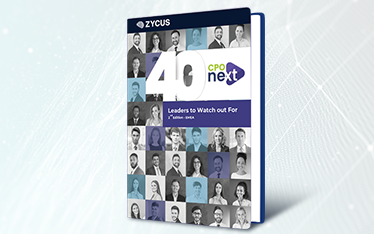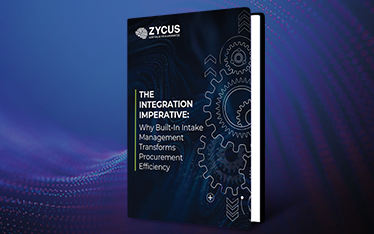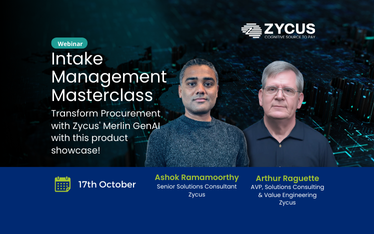zWhat is eProcurement?
Electronic procurement, or e-procurement is the process through which an organization uses the internet or intranet to obtain the goods and services required for its operation. The procurement tools and workflows that enable this purchasing process, are collectively called eProcurement software. This digital strategy optimizes and streamlines every step of the purchase process by using a totally electronic workflow in favor of the conventional paper-based procedures.
eProcurement Process
eProcurement aims to standardize and streamline a company’s procurement procedures by using cloud-based procurement software. This transition from manual operations to automated processes can lead to significant cost savings and improved efficiency. Previously time-consuming procedures, such as locating suppliers for contract signatures or manually calculating savings for the year, can now be automated thanks to a single platform. Cloud-based software that enables seamless communication between numerous businesses and processes improves the effectiveness of procurement.
Read more: European E-Procurement Unveiled: Exploring Key Foundations and Emerging E-Procurement Trends
The core of electronic procurement is the crucial element of vendor/supplier management. Two essential components of this are supplier relationship management and supplier data administration. With e-procurement solution, organizations may manage their supplier relationships better by having faster access to supplier data, the ability to track performance, and the ability to foster collaboration through a single platform.
Also, read: How To Choose The Best eProcurement Platform For You
Additionally, the automated solution eliminates the need for time-consuming manual operations such manually filling out questionnaires for new suppliers, which decreases the administrative duties related to supplier data. By employing the vendor management capabilities of e-procurement solution, businesses may expand supplier relationships, enhance supplier selection, and ensure compliance with contracts and agreements, which will raise the efficacy and success of procurement.
Types of eProcurement
1. E-informing
All electronic procurement processes include e-informing. E-informing entails a two-way exchange of confidential data. The exchange takes place within the organization between internal parties and with outside parties, enabling the business to optimize its electronic procurement procedures.
2. E-sourcing
E-sourcing, which also includes requirement specification and sourcing, is the first stage of electronic procurement. To shortlist vendors for the evaluation stage, it entails pre-qualifying potential suppliers in accordance with the needs of the buying firm.
3. E-tendering
E-tendering accompanies solicitation and assessment. It entails asking the shortlisted vendors for information, proposals, and quotes. This aids in the organization’s analysis and evaluation of the suppliers. The procurement organization employs technologies at this step to guarantee selection transparency.
4. E-auctioning or E-reverse auctioning
E-auctioning, also known as e-reverse auctioning, is connected to contracting and evaluation. The parties involved negotiate the price and the parameters of the contract at this phase. The procurement entity purchases the goods or services from the vendor following the conclusion of an agreement.
In e-auctioning, numerous buyers compete by raising their bids to work with a single supplier. However, in e-reverse auctioning, numerous suppliers underbid each other to get a deal with a single buyer.
5. E-ordering
The negotiating and contract management phases overlap with e-ordering. Requisitions must be created, approved, and executed before orders can be placed and goods can be delivered. On-call contracts that have been fulfilled are now indexed in a digital catalog. Anytime, any place, employees have access to this catalog and can place orders.
User Journey – Manual Procurement
In manual procurement, the user journey refers to the step-by-step process that a user follows when conducting procurement activities without the use of an automated eProcurement system. This could involve activities such as identifying needs, sourcing suppliers, obtaining quotations, and eventually making a purchase. Below is a typical user journey in manual procurement:
It’s important to note that manual procurement processes can be time-consuming, error-prone, and may lack efficiency compared to using automated e-procurement systems. Many organizations have transitioned to automated e-procurement solutions to streamline the procurement process and improve overall efficiency.
User Journey – e-Procurement
The user journey in automated e-procurement refers to the sequential procedure that a user goes through when utilizing an automated procurement system to undertake procurement tasks. This approach uses software or cloud-based platforms to digitally streamline and control the procurement process. Below is a typical user journey in automated e-procurement:
Automated e-procurement systems have many advantages, including improved expenditure management, decreased manual error, increased efficiency, and expanded visibility into procurement activities. The procurement process has been greatly simplified by these tools, which makes it easier to handle and more productive for businesses of all sizes.
Why should you move from manual procurement to eProcurement?
1. Effective Data Management
Effective data management is crucial in the context of eProcurement. Businesses may use data to improve operational efficiencies, which will ultimately increase their bottom line, by adopting digital processes.
By storing business data electronically, it becomes accessible across various systems, breaking down data silos and fostering seamless procurement operations. The availability of comprehensive data metrics enables businesses to optimize costs and eliminate delays.
2. Streamlined Supplier Management
Transitioning from manual procurement processes to streamlined digital methods is essential for dynamic supplier management. Manual handling of repetitive tasks, such as vendor communication and approvals, results in time-consuming and error-prone processes.
Automated methods streamline these repetitious tasks, cutting down on delays and misunderstandings. The health of both parties’ businesses is benefited by increased supplier management efficiency because it fosters connections with vendors.
3. Mitigating Non-Compliance and Legal Risks
Regarding regulatory compliance, traditional paper-based processing presents considerable difficulties for businesses. Keeping paper records can make auditing more difficult, make storage less effective, and make them more susceptible to damage or loss, all of which could have legal repercussions.
Embracing electronic data storage provides a secure and robust risk management solution. Companies can securely store and back up data on password-protected platforms, ensuring that only authorized personnel can access sensitive information.
4. Enhancing Transparency
The involvement of numerous stakeholders in eProcurement, such as procurement teams, approvers, financial teams, and vendors, might make it difficult to maintain openness throughout the procedure.
However, by providing information on different procurement stages, eProcurement solution can address this problem. These platforms enable better decision-making and collaborative efforts among all parties involved by providing visibility into trends, discrepancies, and potential improvement areas.
Benefits of eProcurement
1. Efficiency: By removing paper-based procedures, the purchase process becomes faster and more simplified, decreasing manual errors and delays.
2. Cost Savings: By automating operations, negotiating lower pricing with suppliers, and recognizing opportunities for bulk purchase, e-procurement can contribute to cost reductions.
3. Enhanced Visibility: The electronic nature of e-procurement provides real-time visibility into the procurement process, enabling better tracking and monitoring of orders and expenses.
4. Improved Compliance: Digital systems can enforce procurement policies and ensure adherence to regulations, reducing the risk of non-compliance.
5. Supplier Relationship Management: e-Procurement facilitates easier communication with suppliers, fostering stronger relationships and promoting efficient collaboration.
6. Data-Driven Insights: The electronic data generated by e-procurement systems can be analyzed to identify trends, patterns, and potential areas for improvement.
7. Faster Approvals: Automated approval workflows speed up the approval process, reducing bottlenecks and accelerating the procurement cycle.
8. Maverick Spend Reduction: Implement centralized procurement systems and policies to ensure that all purchases adhere to the approved channels, preventing unnecessary expenses and ensuring compliance.
9. Enhancing Transaction Speed: Automation and efficient workflows expedite purchasing cycles, enabling quicker order processing and delivery.
10. Negotiating Favorable Contracts: Leverage data analytics and market insights to secure advantageous terms, pricing, and conditions, further optimizing procurement outcomes.
11. Minimizing Fraudulent Purchases: Implement stringent controls and verification processes to minimize the risk of fraudulent purchases. Use advanced security measures and regularly audit procurement activities to ensure compliance and integrity.
Overall, e-procurement offers a modern and efficient approach to acquiring goods and services, enabling organizations to optimize their purchasing practices, improve cost-effectiveness, and gain a competitive advantage in the marketplace.
Download our Research Report- Understanding E-procurement, Part 1: Quantifying the Benefits
Examples of eProcurement Functions
1. Vendor onboarding – the process by which a corporation distributes questionnaires to several vendors to collect data.
2. Spending analytics – the e-procurement system records all transactions. Companies can use this information to better future purchasing decisions.
3. Online information request – Companies can utilize an e-procurement platform to get bids and negotiate contract terms.
4. Online market research – The e-procurement platform allows the organization to easily identify and compare various providers. It can also shortlist possible applicants depending on the criteria you choose.
5. Paperwork processes – There is no paperwork because all transactions take place online. The transaction is quicker and less susceptible to human error.
Achieving Excellence: The Hackett Group’s Story with Zycus Generative AI
Witness The Hackett Group’s journey toward achieving excellence in procurement. This video highlights their strategic use of Zycus Generative AI to overcome obstacles and set new benchmarks in the industry.See Their Journey – Click to Watch!
Purchasing vs Procurement
Purchasing: A specific part of procurement, focused on buying products or services from suppliers.
Procurement: The process of acquiring goods or services needed for a business’s operation. It involves planning, sourcing, and managing suppliers.
Scope:
Purchasing: Concentrates on the actual buying of goods or services based on predefined requirements.
Procurement: Covers the entire process, including identifying needs, selecting suppliers, negotiating contracts, and managing relationships.
Read more: Procurement vs. Purchasing: The Definitive Guide
Long-Term vs. Short-Term:
Purchasing: Focuses on immediate needs, obtaining goods or services at the best price and quality for immediate use.
Procurement: Takes a strategic approach, considering long-term goals and supplier partnerships to add value and optimize costs over time.
Relationships:
Purchasing: Primarily concerned with finding and securing the best deals for specific purchases.
Procurement: Aims to build strong relationships with suppliers to ensure reliable and sustainable sources of goods or services.
Involvement:
Purchasing: Usually handled by the procurement team or specific purchasing department.
Procurement: Involves multiple departments and stakeholders across the organization for decision-making and strategic planning.
Decision-Making:
Purchasing: Focuses on tactical decisions related to individual purchases based on predefined criteria.
Procurement: Involves strategic decisions on supplier selection, contract terms, and risk management.
Focus:
Purchasing: Emphasizes cost-efficient buying and timely fulfillment of immediate needs.
Procurement: Emphasizes overall cost optimization, supplier performance, and alignment with organizational objectives.
Challenges in eProcurement
While eProcurement offers significant benefits, it also presents several challenges, such as:
1.Understanding the System:
Many buyers and suppliers are unfamiliar with eProcurement systems, which can lead to confusion and delays.
2.Stakeholder Buy-In:
It’s crucial to involve all internal and external stakeholders in the decision-making process to ensure smooth adoption.
3.Technology Integration:
Organizations must ensure seamless integration with existing systems, which can be challenging due to different standards and frequent technological changes.
4.Implementation Hurdles:
Mistakes during the initial setup phase can result in delays and inefficiencies. Therefore, thorough planning and execution are necessary for successful implementation.
Best Practices in eProcurement
Clearly Define Objectives: Clearly articulate the objectives and goals of your eProcurement initiative. Align them with the overall business strategy to ensure focused and effective implementation.
1. Standardize Processes: Establish standardized procurement processes across the organization. Define clear guidelines to ensure consistency and efficiency in procurement activities.
2. Transparency: Foster a transparent procurement process by providing visibility into the entire procurement lifecycle. Communicate requirements, criteria, and decision-making processes to all stakeholders involved.
3. Automation: Embrace technology to automate eprocurement processes. Implement eProcurement systems and procurement tools that streamline workflows, automate approvals, and integrate with other systems for seamless data exchange.
4. Data-Driven Inventory Decisions: Leverage data analytics to make informed inventory decisions. Analyze historical data, demand forecasts, and market trends to optimize inventory levels, reduce stockouts, and improve overall supply chain performance.
5. Multi-Sourcing Strategy: Implement a multi-sourcing strategy to diversify suppliers and mitigate risk. Identify alternative sources for critical goods or services, ensuring continuity of supply even in the face of disruptions or changes in market conditions.
6. Long-Term Supplier Relationships: Cultivate long-term relationships with strategic suppliers. Invest in building strong partnerships, collaborating on continuous improvement, and jointly exploring cost-saving opportunities.
7. Procurement Staff Education: Provide regular training and professional development opportunities for procurement staff. Keep them updated on industry trends, best practices, and evolving technologies to enhance their skills and knowledge.
Download our Research Report- Understanding E-procurement, Part 2: Critical Success Factors
By incorporating these best practices, organizations can enhance procurement efficiency, reduce manual efforts, improve decision-making, foster transparency, mitigate risks, and build stronger supplier relationships, ultimately driving operational effectiveness and achieving better business outcomes.
Conclusion
eProcurement is transforming the way organizations manage their purchasing activities. By streamlining workflows, enhancing visibility, and enabling real-time decision-making, eProcurement systems provide a comprehensive solution to procurement challenges. Adopting this digital approach allows businesses to maximize operational efficiency, reduce costs, and foster long-term supplier relationships. With the growing importance of data-driven procurement, eProcurement is becoming essential for organizations seeking to optimize their supply chains and remain competitive.
For more details on how Zycus eProcurement Software can enhance your business processes, visit Zycus eProcurement Software or learn about Zycus Supplier Management Solutions to improve vendor collaboration and performance.
Ready to transform your procurement? Get in touch with Zycus experts to learn how our eProcurement solutions can optimize your source-to-pay processes.
FAQs
Q: What is eProcurement?
eProcurement is the process of purchasing goods and services through electronic methods, often via a dedicated procurement software.
Q: How does eProcurement enhance efficiency?
eProcurement streamlines procurement processes by automating workflows, reducing paperwork, and enabling real-time tracking.
Q: What are the benefits of using eProcurement solutions?
Benefits include cost savings, improved supplier management, enhanced visibility, and better compliance with procurement policies.
Q: Can eProcurement systems integrate with existing ERP solutions?
Yes, modern eProcurement systems are designed to seamlessly integrate with existing ERP and financial systems.
Q: How does eProcurement improve supplier collaboration?
eProcurement fosters better supplier collaboration by providing a centralized platform for communication, contract management, and performance evaluation.
Related Read:
- How To Choose The Best eProcurement Platform For You
- Online Procurement
- The Top 5 Benefits of E-Procurement: Streamlining Procurement for a Brighter Future
- Mastering Change Management in E-Procurement Software Implementation: Best Practices
- Understanding E-procurement, Part 2: Critical Success Factors
- The Role of AI in eProcurement
- Zycus announces the launch of Merlin for eProcurement
- Web story: eProcurement Revolution- A Guide to Modern Procurement
- The Advantages of E-Procurement Solutions in the APAC Region
- Mastering Change Management in E-Procurement Software Implementation












